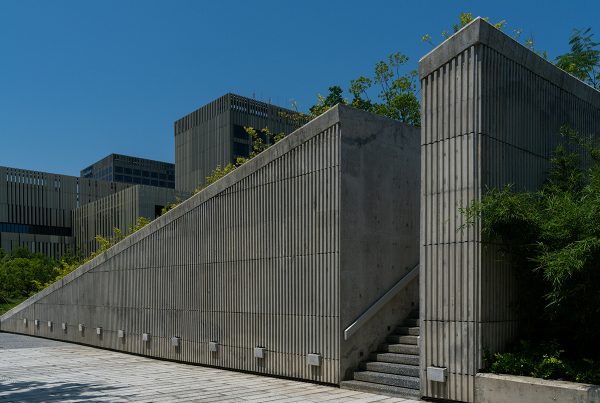Parks are ideal for strolling in during the day, providing a place to soak in the sunlight, while playgrounds help drain children of their excess energy so they can sleep better at night. However, aside from being enjoyable during the day, parks are proving to be just as beneficial at night, becoming hot spots for sustainable urban development. Smart engineering, renewable energy and eco-friendly technologies are now playing a key role in this transformation.
Combating Light Pollution
Natural landscapes include more than just the immediate environment people have access to. They also encompass the night skies above. Many people seem to recall seeing more stars in the past than they do today, and it’s not just because they were once children who loved to gaze at the skies without a care in the world. In reality, it’s due to increasing light pollution that is obstructing people’s view of the stars.
One study found that stars are dimming thanks to a 10% yearly increase in the sky background due to artificial light. While this may benefit security, wildlife and humans suffer from its consequences — even if people aren’t fully aware of it yet.
Light pollution is worsening because of the excessive artificial lighting humans have installed, which is intrusive and harmful to many wildlife species. While LED lights are a more efficient alternative to traditional incandescent bulbs, the abuse and misuse driven by their low cost and energy efficiency only contribute to the problem.

Is LED Lighting Bad Lighting?
Many LED light fixtures emit a hue of light at 3,000 kelvins, which produces a cooler, bluish light — bluer even than older streetlights that used to emit an amber glow at 2,700 kelvins. For comparison, 5,000 kelvins are as bright as daylight.
Blue light, with its shorter wavelength, is particularly problematic for stargazing. It scatters more easily in the Earth’s atmosphere, brightening the sky and contributing to dayglow. Excessive light exposure also messes with a person’s natural sleep-wake cycle. While LED lights themselves aren’t the enemy, their misuse certainly is.
The best solution is to light only the areas that require it instead of flooding parks with light. The ideal distance for pathways is 8 to 10 feet between each lamp and, ideally, 10 feet from water systems.
Lighting Parks With Solar
Another solution is that sustainable playgrounds should be lit using solar instead of relying on grid power — the same energy that supplies neighborhoods and cities. Advancements in solar technology are brightening the atmosphere in sustainable parks, allowing people to remain connected to nature at night without causing additional harm to the planet.
These solar-powered lights use panels to capture sunlight during the day and energize poles for enhanced visibility and safety after dark. Aside from cutting excess light, it removes the need to disrupt soil to trench for wires. If this becomes a standard feature in eco-friendly playgrounds and parks, imagine how many resources could be conserved in energy and expenses.
While there’s a wide range of color temperatures, the best choice is to select warm white for an inviting glow that doesn’t contribute as much dayglow as cooler lighting.
Why Go for Warm Bulbs?
A study by the NPS Natural Sounds and Night Skies Division revealed that while humans naturally prefer bright lighting that mimics daylight — especially in areas like parking lots where visibility and security are important — opinions shift when people learn about its negative effects on wildlife and human vision. Once informed, many participants supported lighting that better protects nature and wildlife.
In the study, red-and-white blended lights were favored by many for providing visual comfort while still allowing enjoyable nighttime experiences, such as viewing the Milky Way. While not all lighting needs to be red, the findings highlight the importance of educating park visitors about changes in lighting. When people understand that adjustments benefit the environment and their experience, they’re more likely to appreciate and support the shift.
Playing With Solar-Powered Screens
Parks are no longer just a daytime destination for children. Beyond improved lighting, new strategies are being introduced to attract more visitors after dark.
In Ho Chi Minh City, a pilot project has launched solar-powered lighting systems with interactive educational screens, transforming parks into safe and engaging spaces for play and learning, even at night. These systems use solar panels to power screens that light up when visitors approach. The content includes games, quizzes and educational material on solar energy and environmentally friendly technologies.
This creative approach enhances the nighttime park experience and promotes public awareness and interest in sustainability. As visitors become more informed, community involvement in renewable energy initiatives is likely to grow.
Strengthening Park Safety
Safety concerns have often kept people from enjoying public parks and playgrounds after dark. Integrating solar-powered security cameras addresses this challenge head-on. These cameras are powered by solar energy and provide 24/7 monitoring, ensuring that parks remain safe and secure even during late hours.
Even the mere presence of visible security cameras can immediately deter lurking criminals and make them move on to another target. The cameras ensure clear visibility even in low-light conditions with features like night vision. Moreover, these solar-powered systems are environmentally friendly, reducing the need for traditional power sources.
Illuminating the Way to a More Sustainable Future
Various movements toward sustainable living are gaining traction worldwide, influencing the design of infrastructure and public amenities — parks included. This shift is not just a passing trend driven by the global push for low-impact lifestyles but a meaningful transformation in how environmentally friendly playgrounds are designed and experienced by the public.
Through these innovations, parks and playgrounds demonstrate that sustainability doesn’t end when the sun goes down.












